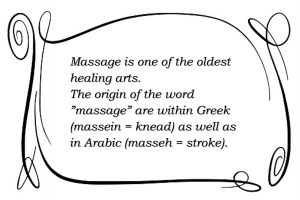Some people may ask whether animal massage is a progressive therapeutic approach or just a trendy gimmick. But far from it! Even in ancient Egypt, veterinarians were accompanied by animal massage therapists.


In ancient Greece, massaging dogs was quite common. Galenus, a gladiator doctor in ancient Greece, also described the use and positive effect of classic massage on athletes.
In his book “Handbuch der Massage und Heilgymnastik” (published by Georg Thieme Verlag in 1926), Frank Kirchberg refers to massage as a natural human reaction to physical pain: “Just as every person instinctively rubs or presses a swollen and therefore painful or bruised area of their body in an attempt to reduce the pain caused by the tension, this instinctive means will probably have been used as a remedy at all times.”
Horses react in a similar way: they try to get rid of unpleasant sensations by rolling around in the case of colic, pressing against the wall and rubbing in the case of itching, and humping in the case of muscle tension. A massage is therefore very beneficial for our friend.
Massage as it is practiced on people today was created by the Swede Henrik Ling. He further developed the massage techniques and created the so-called “Swedish massage”, the basic techniques of which are still used today.
Jack Meagher successfully developed and established equine massage. He is considered a pioneer of modern equine massage. His techniques are used and disseminated by equine sports massage therapists worldwide. Stress point massage in particular is a cornerstone of equine sports massage today.